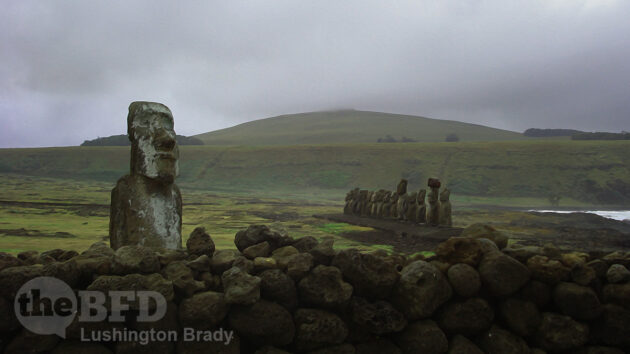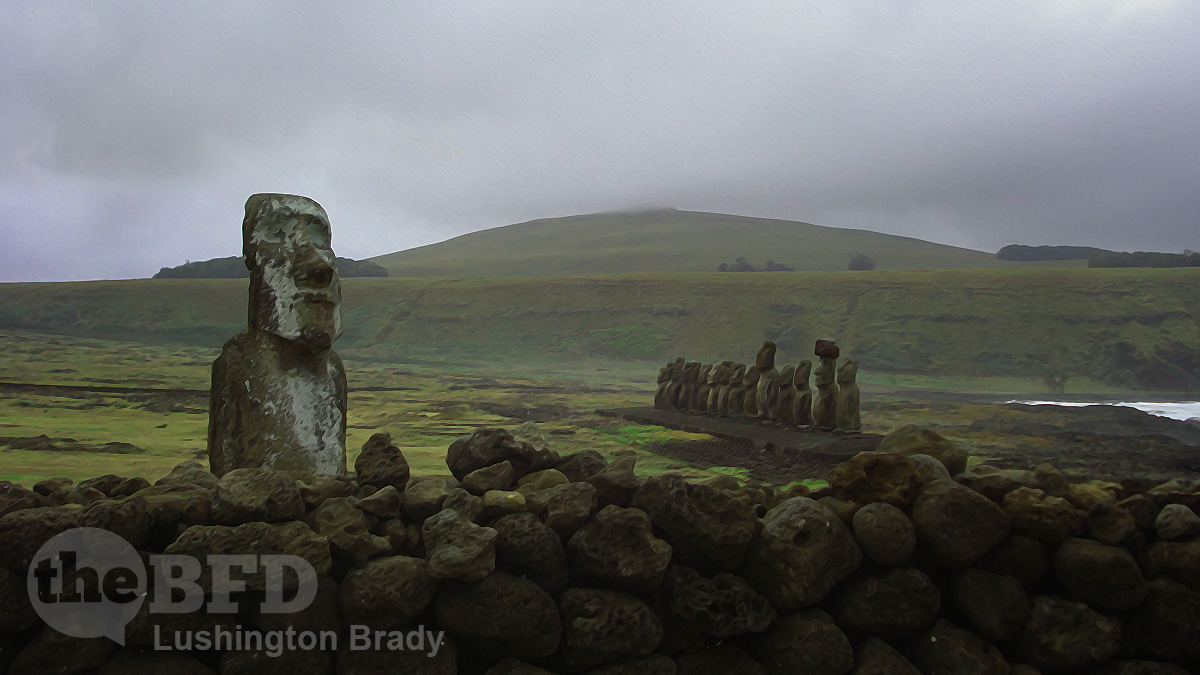Easter Island has long been a poster boy for Malthusians. Like other Polynesian so-called “Future Eaters”, the Rapanui people are argued to have settled and then become stranded on the remote island, where they quickly ate themselves out of house and home.
When European explorers discovered the island, it had little forest cover and a small human population. The discovery that the island once hosted extensive palm forests led to the conclusion that human arrival led to ecological devastation and subsequent population collapse.
But was it really so?
Initially settled by Polynesian voyagers between the 12th and 13th century CE, Easter Island is famous for the environmental changes that followed human arrival, the remarkable achievements of Rapanui people in megalithic construction, and long-standing debates surrounding demographic patterns preceding European contact.
Central to these debates is the assumption that unrestricted population growth and environmental degradation stemming from deforestation and cultivation ultimately led to a demographic and cultural collapse prior to European arrival in 1722.
Much of the basis for this narrative stems from the assumed incongruity of the island’s marginal environment, prolific monumental architecture, and small contact-era population size, which at the time of Dutch and Spanish visits in 1722 and 1770 was estimated to be no more than a few thousand.
Easter Island, however, was once covered in an extensive palm forest that by the time of European contact had largely disappeared due to the impacts of land-clearing for agriculture and the invasive Pacific rat.
The story of Easter Island is therefore assumed to be a straightforward Malthusian narrative.
The duration and consequences of deforestation have been debated, with many arguing for an ecological catastrophe whereby rapid forest removal caused widespread erosion, depletion of soil productivity, reduction in surface freshwater, and reduced carrying capacity.
“For Rapa Nui, a big part of scholarly and popular discussion about the island has centered around the idea that there was a demographic collapse, and that it’s correlated in time with climate changes and environmental changes,” said Dr. Robert DiNapoli, a postdoctoral researcher in the Department of Anthropology at Binghamton University.
Combining new population modelling techniques with radiocarbon data suggests a very different picture.
They found that the island experienced steady population growth from its initial settlement until European contact in 1722.
After that date, two models show a possible population plateau, while another two models show possible decline.
In short, there is no evidence that the islanders used the now-vanished palm trees for food, a key point of many collapse myths[…]
Construction of the moai statues, considered by some to be a contributing factor of collapse, actually continued even after European arrival.
The new findings suggest that deforestation was a long-term event, not the result of humans suddenly stripping the island bare. Moreover, the Rapanui responded to their drying climate with characteristic human ingenuity: mulching gardens with stones, to conserve moisture.
In short, the island never had more than a few thousand people prior to European contact, and their numbers were increasing rather than dwindling.
“Those resilience strategies were very successful, despite the fact that the climate got drier. They are a really good case for resiliency and sustainability,” Professor Carl Lipo said.
Sci-News

Please share this article so that others can discover The BFD

